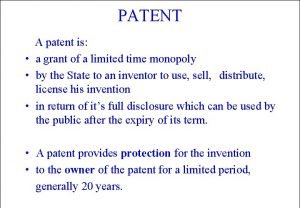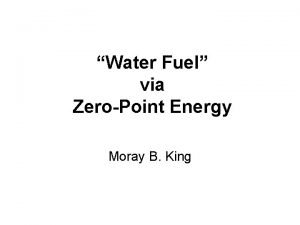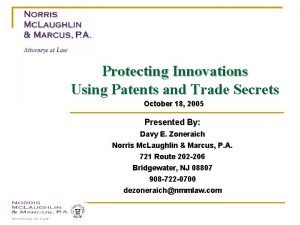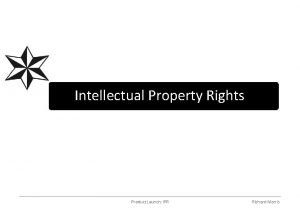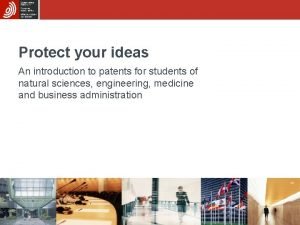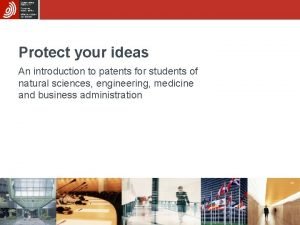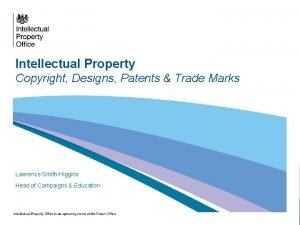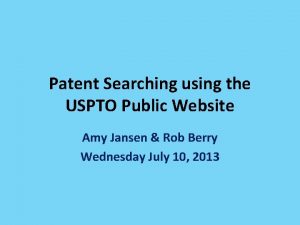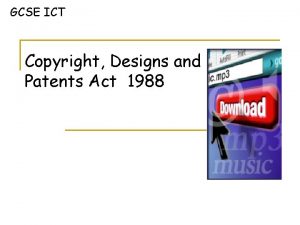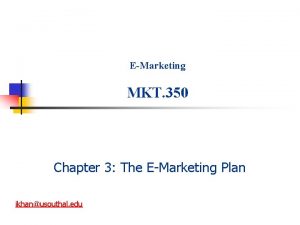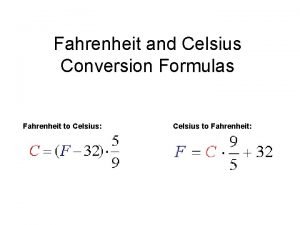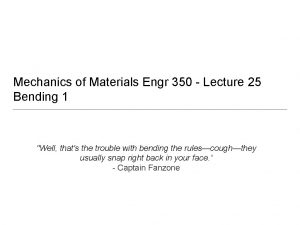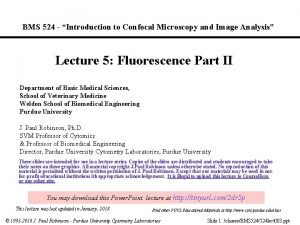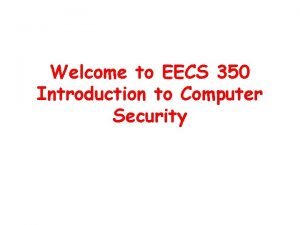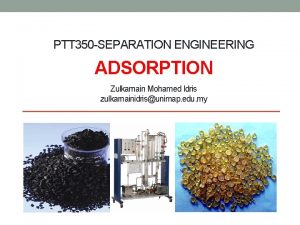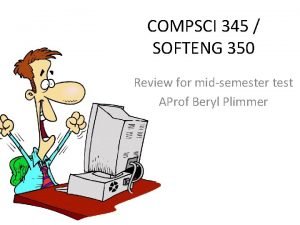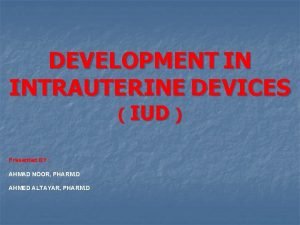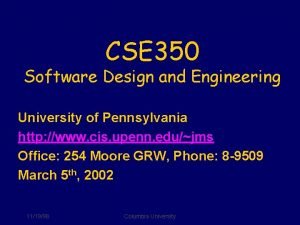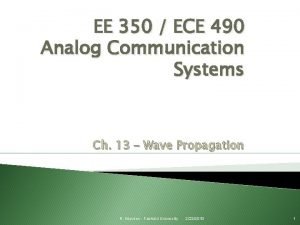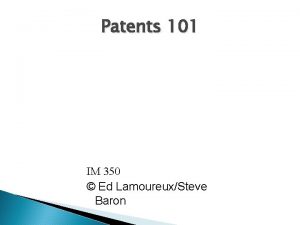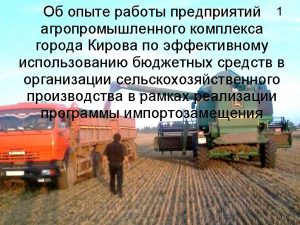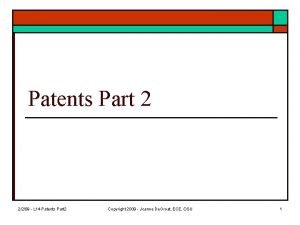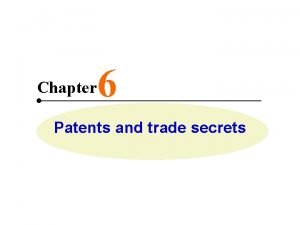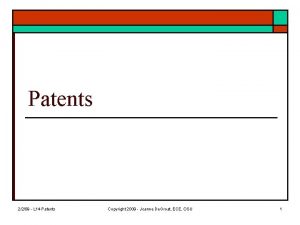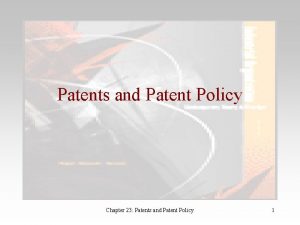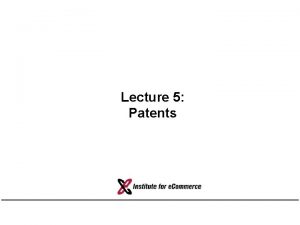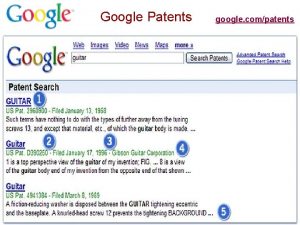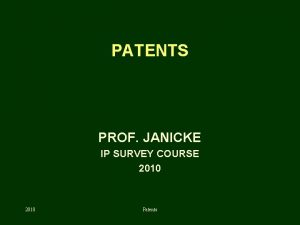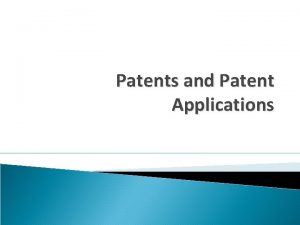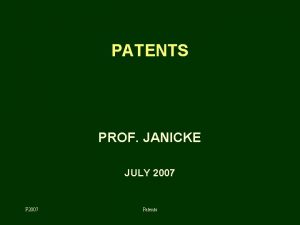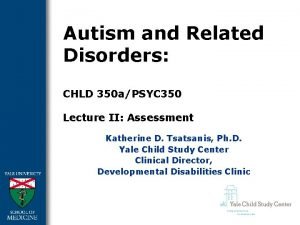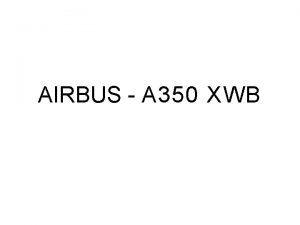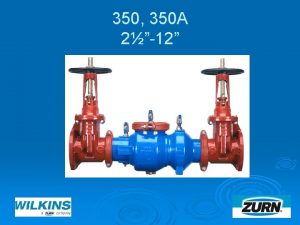Patents 101 IM 350 2012 2013 2014 2015





















- Slides: 21

Patents 101 IM 350 © 2012, 2013, 2014, 2015 Ed Lamoureux/Steve Baron

And now, for something new, useful and not obvious ◦ The licensing system is broken (Priceline founder Jay Walker on a no-fault licensing system) ◦ 5 of the most absurd patents in the US (breaking the set) ◦ The belief that our patent system is broken is patently false (former director of the US Patent Office) [an argument against taking the system apart IF doing that weakens patent protection for inventions).

Patent Complexities Special court: Court of Appeals for the Federal Circuit Court Special lawyers and certification Large DC bureaucracy, though many claim that the principle problem is that the office is overwhelmed. ◦ In 2007 there were 4, 000 examiners, 332, 000 applications ◦ In 2007 the office started a program of allowing some outside comments during the process (can the web help? ) During the “change-over” to digital, the office probably made loads of mistakes, esp. by giving out patents on processes that were not yet understood (many of these were formative digital technologies). ◦ EFF’s Patent Busting Project

What is a Patent? A U. S. patent for an invention is the grant of a property right to the inventor(s), issued by the U. S. Patent and Trademark Office. The right conferred by the patent grant is, in the language of the statute and of the grant itself, “the right to exclude others from making, using, offering for sale, or selling” the invention in the United States or “importing” the invention into the United States. To get a U. S. patent, an application must be filed in the U. S. Patent and Trademark Office.

What Law Governs Patents? The first patent law was enacted in 1790. The patent laws underwent a general revision which was enacted July 19, 1952, and which came into effect January 1, 1953. It is codified in Title 35, United States Code. Additionally, on November 29, 1999, Congress enacted the American Inventors Protection Act of 1999 (AIPA), which further revised the patent laws. The. America Invents revision in 2011 became effective by 2013.

What Can Be Patented? Any person who “invents or discovers any new and useful process, machine, manufacture, or composition of matter, or any new and useful improvement thereof, may obtain a patent, ” subject to the conditions and requirements of the law. May include: ◦ Improvements to known technologies ◦ New combinations of known technologies ◦ New uses of known technologies These classes of subject matter taken together include practically everything that is made by man and the processes for making the products.

What Cannot Be Patented? Inventions useful solely in the utilization of special nuclear material or atomic energy for atomic weapons. The laws of nature, physical phenomena, and abstract ideas are not patentable subject matter. A mere idea or suggestion.

Conditions For Obtaining A Patent Novelty The patent law specifies that the subject matter must be “useful. ” ◦ the subject matter has a useful purpose and also includes operability ◦ E. g. , a machine which will not operate to perform the intended purpose would not be called useful, and therefore would not be granted a patent. In order for an invention to be patentable, it must be new as defined in the patent law.

Conditions For Obtaining A Patent Novelty An invention cannot be patented if: “(a) the invention was known or used by others in this country, or patented or described in a printed publication in this or a foreign country, before the invention thereof by the applicant for patent, ” or “(b) the invention was patented or described in a printed publication in this or a foreign country or in public use or on sale in this country more than one year prior to the application for patent in the United States. . . ”

Conditions For Obtaining A Patent Novelty If the inventor describes the invention in a printed publication or uses the invention publicly, or places it on sale, he/she must apply for a patent before one year has gone by, otherwise any right to a patent will be lost. The inventor must file on the date of public use or disclosure, however, in order to preserve patent rights in many foreign countries.

Conditions For Obtaining A Patent - Non-Obviousness The subject matter sought to be patented must be sufficiently different from what has been used or described before that it may be said to be non-obvious to a person having ordinary skill in the area of technology related to the invention. For example, the substitution of one color for another, or changes in size, are ordinarily not patentable.

Types of Patents Utility patents may be granted to anyone who invents or discovers any new and useful process, machine, article of manufacture, or compositions of matters, or any new useful improvement thereof. Design patents may be granted to anyone who invents a new, original, and ornamental design for an article of manufacture. Plant patents may be granted to anyone who invents or discovers and asexually reproduces any distinct and new variety of plant.

Types of Patents Business methods (software patents are usually of this type) ◦ Originally allowed like any other invention. ◦ [Then] (roughly, 1905 -1998 --before State Street v. Signature) disallowed. [Then] allowed IF the innovation advanced the technological arts. That special requirement was struck in 2005. ◦ Now business methods are treated as any other type of innovation. ◦ Bilski, at the Supreme Court, retained: process patents

◦ With lots of “how to use technology” stuff, it’s tough to determine whether the innovation is a product or a process. Early digital technology, esp. internet activities, got through as products when they were processes AND A lot of these turned out to be bad filings and approvals BUT Now we’re stuck with trying to work them out. For example: Gibson and Guitar Hero “Gibson says "Guitar Hero" too closely matches a musical virtual-reality patent from 1999, and Activision should not be able to sell the game until it receives a license under the patent. ”

How Long and Where is a Patent Protected? Generally, the term of a new patent is 20 years from the date on which the application for the patent was filed in the United States or, in special cases, from the date an earlier related application was filed, subject to the payment of maintenance fees. U. S. patent grants are effective only within the United States, U. S. territories, and U. S. possessions. Under certain circumstances, patent term extensions or adjustments may be available.

Patent Process Overview One should not publish/demonstrate/sell/offer to sell publically until after making application (for US only, there’s a one year grace period, but not oversees, or here, after the new bill goes into place). ◦ Although there are debates over how and how well this grace period work under “first to file. ” First to invent used to win in US. First to file wins elsewhere. First to file here after March 13, 2013.

Patent reform: Leahy-Smith America Invents Act Key Elements of America Invents Act The new law will harmonize the American patent process with the rest of the world: First to file A fast track option for Patent Processing within 12 Months: Instead of an average wait time of almost three years, the Patent and Trademark Office will be able to offer startups growing companies an opportunity to have important patents reviewed in one-third the time – with a new fast track option that has a guaranteed 12 -month turnaround. Patent ownership is a critical factor venture capital companies consider when investing in entrepreneurs hoping to grow their business.

Reducing the current patent backlog: , the patent backlog has already been reduced from over 750, 000 patent applications to 680, 000, despite a 4% increase in filings. The additional resources provided in the law will allow the Patent and Trademark Office to continue to combat the backlog of nearly 700, 000 patent applications and will significantly reduce wait times. Reducing litigation: Review process for approved patents. Increasing office budget: enable price increases. ◦ Could hurt smaller tech firms: http: //www. forbes. com/sites/ciocentral/2011/09 /20/new-patent-law-means-trouble-for-techentrepreneurs/

The timeline Source: http: //parts. mit. edu/igem 07/index. php/Kristin_Fu

Penalties Court awarded damages, issued to the patent owner ◦ Amount could be set by jury or judge. ◦ Requires the infringer to pay monetary damages of a variety of types. Compensation for wrongful use. royalty rate: what would the cost of licensing have been? Under some circumstances, this amount can be “factored” (tripled) for willful infringement Interest on the damages from the date of first infringement Court costs (but generally not attorney’s fees) Injunction, perhaps stayed (or invoked) during appeal, permanent or otherwise, to stop further infringement.

Patent Tolls What is a patent troll? , 2006 Rise of the patent trolls, 2005 Slowing the trolls, 2006 Fighting back, trying to slow the trolls: ◦ Patent. Freedom, 2008 ◦ Linux Defenders, 2009 Trolls are a symptom of deeper problems Patent Trolls & Investment Portfolios. . . ◦ When is a troll not a troll at all? There are many non-practicing entities (like universities) and most corporations have lots of non-practicing patents in their portfolios
 Patents are granted for a new
Patents are granted for a new Water powered car
Water powered car Types of patents
Types of patents Patents
Patents Simproved harry potter world
Simproved harry potter world Advantages and disadvantages of patents
Advantages and disadvantages of patents What is the copyright designs and patents act 1988
What is the copyright designs and patents act 1988 Types of patent
Types of patent Copyright designs and patents act 1988 examples
Copyright designs and patents act 1988 examples Napkin plan in e marketing
Napkin plan in e marketing Celcius equation
Celcius equation Engr 350
Engr 350 350-170-120
350-170-120 (780) 632-350
(780) 632-350 Stat 350
Stat 350 Xkcd 350
Xkcd 350 Ptt-350
Ptt-350 Compsci 345
Compsci 345 %20 eksiği 240 olan sayı kaçtır
%20 eksiği 240 olan sayı kaçtır Fincoid 350
Fincoid 350 Cse 350
Cse 350 Geosync lnb
Geosync lnb
